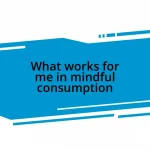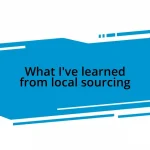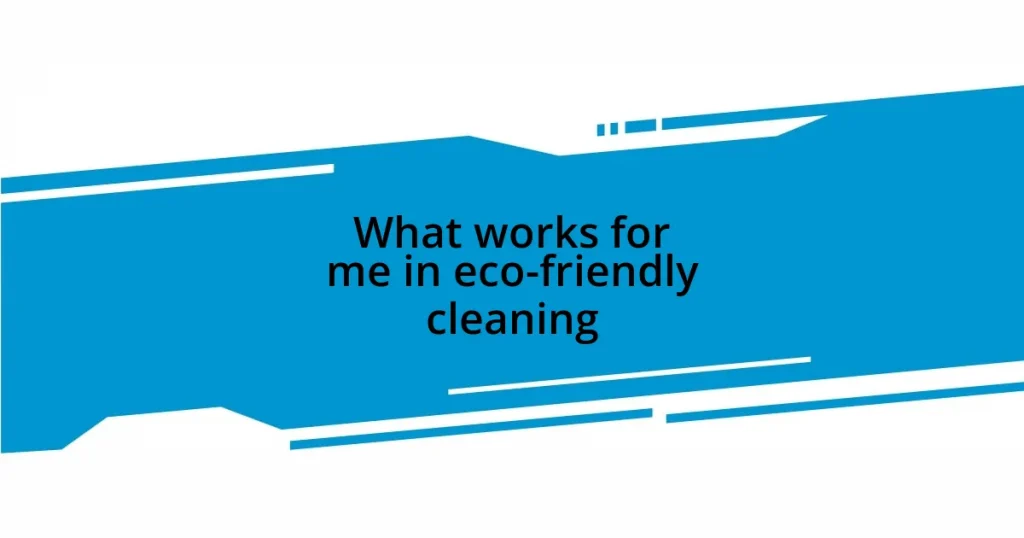Key takeaways:
- Relatable analogies, like comparing climate change to a fever, help kids grasp the concept and its relevance to their lives.
- Engaging hands-on activities, such as mini-garden projects and nature scavenger hunts, foster curiosity and a sense of ownership over environmental stewardship.
- Real-life examples, like pollution cleanup and community gardening, enhance children’s understanding and inspire action on climate issues.
- Incorporating technology, such as virtual field trips and interactive apps, enriches learning experiences and motivates students to take responsibility for their environmental impact.

Understanding Climate Change Basics
When I first started teaching kids about climate change, I realized just how vital it is to make the basics relatable. I often begin with the simple idea that climate change is like a fever for our planet; just as a fever tells us something’s wrong in our bodies, the changes we see in weather patterns signal distress for Earth. Have you noticed how weather reports often speak of unusual storms or heatwaves? That’s not just a coincidence; it’s a direct reflection of our planet’s increasing temperature.
One memorable experience was during a nature walk with my students. We discovered some flowers blooming weeks earlier than usual. I asked them, “Why do you think this is happening?” The answers varied, but the realization that these blooms were affected by changes in our climate really struck a chord. It made them see that climate change isn’t just an abstract concept—it’s happening all around them, influencing their world in very tangible ways.
I also like to explain the greenhouse effect using a simple, engaging analogy. Imagine wrapping yourself in a warm blanket on a chilly day; it keeps you cozy, right? But what happens if that blanket gets too thick? You start to overheat! The same principle applies to our atmosphere and greenhouse gases. By illustrating complex ideas in this way, I’ve seen kids connect emotionally and intellectually with the subject, fostering an eagerness to learn more about how they can help.

Importance of Teaching Kids Early
Teaching kids about climate change early is crucial, as it helps shape their understanding and attitudes toward the environment. I’ve noticed that the earlier children grasp these concepts, the more likely they are to embrace eco-friendly habits that could last a lifetime. For instance, I once hosted a small workshop and watched as my students passionately brainstormed ideas for reducing plastic use at their schools. Their enthusiasm taught me that when kids are involved in the conversation, they become empowered to make a difference.
Early education on climate also inspires curiosity. I often encourage questions like, “Why do some trees lose their leaves in the winter, but others don’t?” This leads to discussions about climate zones and ecosystems, igniting a natural love for science. I believe kids are like sponges, soaking up information when presented in a fun way. For example, after learning about animals affected by habitat changes, one student wrote a heartfelt letter to a local representative, asking for action. Seeing them take initiative like that reminded me how impactful early teaching can be.
Moreover, exposing children to climate issues fosters a sense of responsibility. When I share stories of young climate activists, it opens their eyes to the idea that they too can contribute to change. I remember one child saying, “If they can do it, so can I!” This sparked a conversation about simple actions they could take, such as starting a recycling program in their class. Encouraging this mindset early ensures that they understand their role as stewards of the planet.
| Key Benefit | Details |
|---|---|
| Empowerment | Children who learn early become proactive in environmental issues. |
| Curiosity | Early education fosters a love for science and deeper understanding of ecosystems. |
| Responsibility | Kids develop a sense of duty towards climate action and community involvement. |
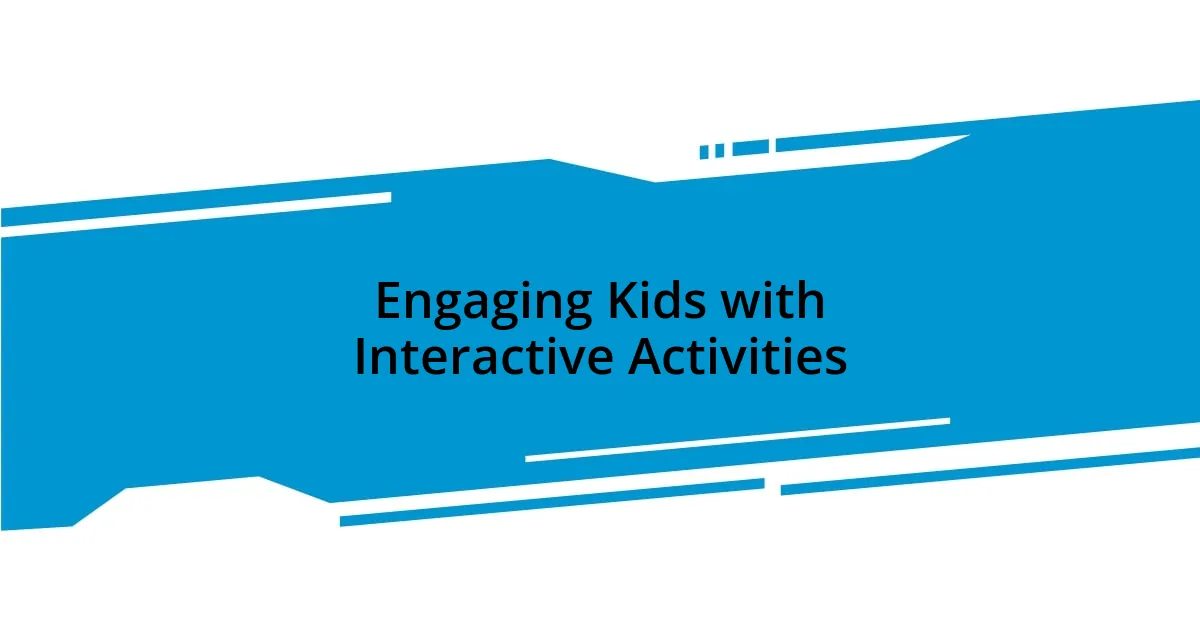
Engaging Kids with Interactive Activities
Engaging kids through interactive activities transforms learning about climate change into a hands-on experience. For instance, I once organized a mini-garden project where the kids planted seeds and watched them grow throughout the season. Each week, we discussed the importance of plants in absorbing carbon dioxide and producing oxygen. I could see their faces light up with excitement as they made connections between their gardening efforts and the broader environmental impact.
Here are some interactive activities that have resonated well with my students:
- Nature Scavenger Hunts: Kids search for specific plants, insects, or signs of climate change while learning about local ecosystems.
- DIY Recycling Projects: Transforming recyclable materials into art or functional items helps them understand the importance of reducing waste.
- Climate Diaries: Encouraging children to document changes in their surroundings fosters observation skills and personal reflection on environmental issues.
- Interactive Storytelling: Using books about climate change, students can act out scenarios, enhancing their empathy for affected wildlife and communities.
- Science Experiments: Simple experiments, like creating a small greenhouse effect using jars and soil, help visualize the concepts in a playful manner.
These activities not only encourage participation but also empower kids to become curious and passionate about the environment, making the subject come alive in a way that traditional teaching methods often can’t achieve. I’ve realized that when kids can touch, see, and feel the environment’s nuances, it ignites a meaningful connection that truly fosters a sense of ownership over our planet’s future.

Using Real-Life Examples for Learning
In my experience, real-life examples can significantly enhance children’s understanding of climate concepts. I vividly recall a trip to a local beach where we examined the impact of pollution firsthand. As we collected plastic waste, the children’s expressions shifted from curiosity to concern, sparking a discussion about how their actions could contribute to cleaner oceans. Seeing them connect the dots between what they learned in the classroom and real-world situations was incredibly powerful.
Another impactful moment unfolded during a visit to a community garden that showcased sustainable practices. I encouraged the kids to ask questions about composting and organic farming. One child remarked, “So, all this waste can turn into food for the plants?” This simple realization was a breakthrough, highlighting how life cycles are interconnected. It’s these tangible experiences that stick with children and shape their understanding of environmental stewardship in a significant way.
Using stories of local wildlife, such as watching a documentary about endangered species in our area, can also be eye-opening. I once introduced a short film about sea turtles and their struggle against plastic pollution. The students were so moved that they initiated an awareness campaign at their school. Their passion reminded me that relatable examples don’t just teach; they inspire action and responsibility, turning knowledge into a catalyst for change. Don’t you think that witnessing real-world implications makes the learning experience so much more impactful?
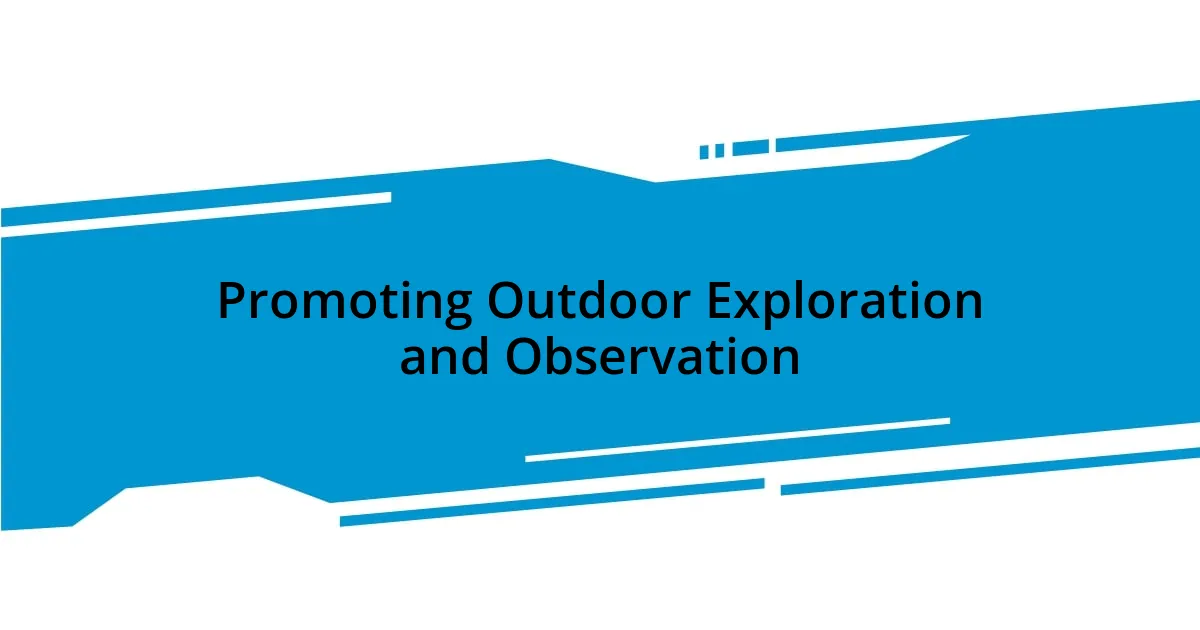
Promoting Outdoor Exploration and Observation
When I take my students outdoors, the energy shifts in an exhilarating way. One afternoon, we wandered into a nearby forest, and I asked them to find different types of leaves. As they eagerly collected leaves, their chatter about their discoveries filled the air. I realized that simply being outside sparked an inherent curiosity in them. It’s thrilling to watch them grasp the idea that ecosystems thrive right under their feet, and I see their little minds working hard to make connections about the environment.
Outdoor exploration also offers a perfect backdrop for sensory experiences that classroom settings just can’t replicate. During a butterfly garden visit, one child gently cupped a butterfly in their hands. The awe in their eyes was evident when they whispered, “It feels so light!” This moment wasn’t just about observing a beautiful creature; it was a gateway to discussing biodiversity and the significance of pollinators. Don’t you think these tangible encounters leave a lasting mark on how kids perceive their role in protecting such delicate life?
I often integrate observation journals into our outdoor activities, where kids sketch or write about their findings. One day, I noticed a child intensely documenting the different cloud formations above us. When I asked why, they said, “I want to remember what the sky looks like this summer.” That’s when it hit me—these simple acts of noting and reflecting cultivate a deeper understanding that can’t be achieved with textbooks alone. Kids learn to appreciate the dynamic nature of our world and, in turn, feel empowered to act as stewards of their environment. Isn’t it inspiring to think about how these small steps lead to greater awareness and responsibility?

Incorporating Technology and Resources
Incorporating technology into climate education can truly elevate children’s learning experiences. I remember the excitement during a virtual field trip to a coral reef, where students could explore ecosystems they might never see in person. Seeing their eyes widen as they interacted with a 3D model of the reef sparked lively conversations about ocean conservation. It’s amazing how technology can bridge gaps in knowledge and transport kids to places that fuel their curiosity.
Resources like interactive apps and online simulations are particularly effective. For instance, I introduced an app that tracks carbon footprints. One day, a student exclaimed, “I didn’t realize my daily habits had so much impact!” Her realization was a turning point, leading to a classroom challenge where we aimed to reduce our collective footprint. Technology can create a dynamic learning environment that encourages children to take responsibility and think critically about their actions. Isn’t it fascinating how a simple app can inspire change?
Moreover, online platforms offer a treasure trove of documentaries and educational games focused on climate change. I remember showing a short animated series about renewable energy sources, and the kids became so animated discussing wind and solar power. They began brainstorming ways to reduce energy usage at home, illustrating that such tools are not just informative but also catalyst for real change. These interactions remind me that when it comes to teaching about climate, the right resources can spark an unstoppable enthusiasm for learning. Don’t you think that empowering kids with knowledge through technology can lead them to become the environmental stewards we desperately need?




